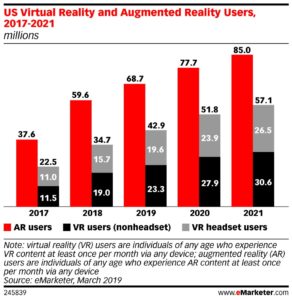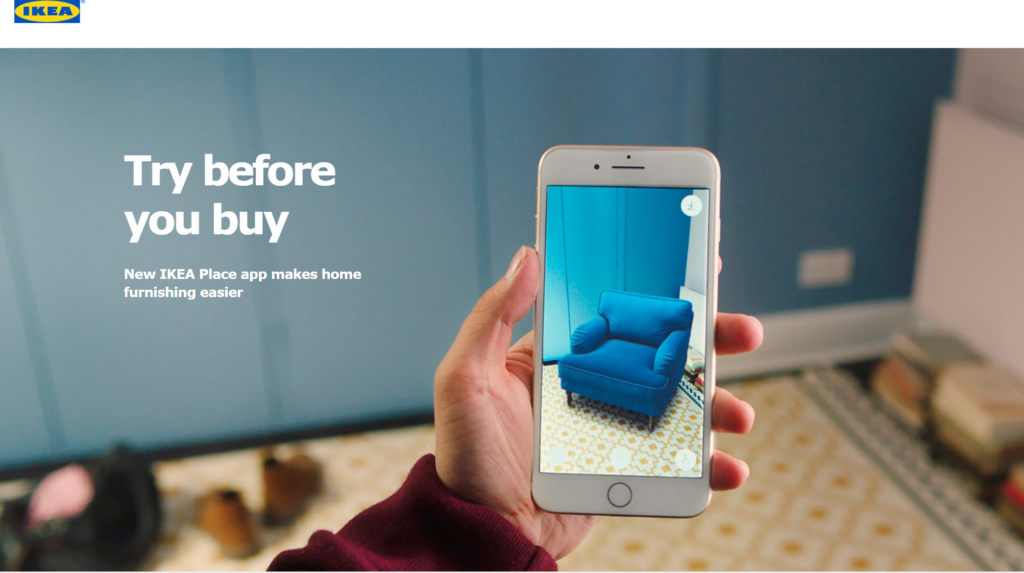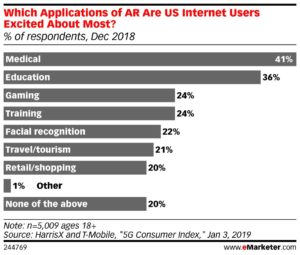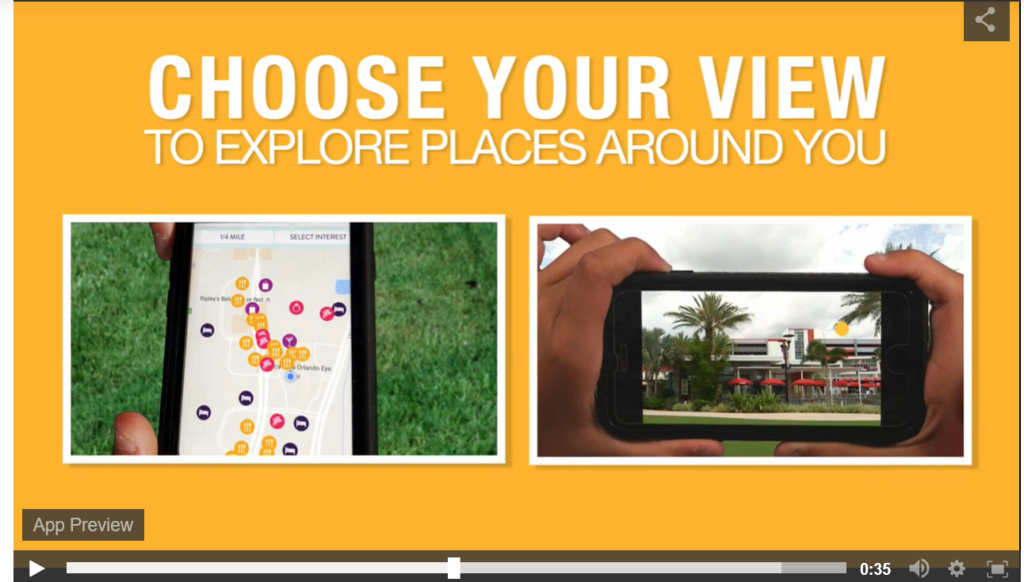Destination marketers have long struggled to tell their story in a way that brings each location to life. Instead of selling products or services, they sell an experience, which is often hard to capture unless you’re able to, well, visit. Generating interest for places people have never been to makes this type of marketing a significant challenge.
Immersive video – powered by 360° cameras and 3D platforms – can help solve this problem and can make a significant impact on audiences across devices. The advances of augmented reality (AR) and virtual reality (VR) change all the rules. These more immersive technologies shift the focus from reach to depth as the measure of effective content and storytelling.
More and more companies are embracing AR and VR to connect with people on a deeper level, and these “new realities” should be considered a part of the marketing toolkit to help attract more prospects and drive users down the conversion funnel to sales. Destination marketers can finally make their offering a reality using these technologies.
Given the general unfamiliarity with this brave new (tech) world, we’re breaking down key reasons why you should consider AR and VR as part of your destination marketing and sharing some examples of those already doing it well.
AR vs. VR
Before we discuss applications for AR and VR, a simple understanding of the differences between them is needed. According to eMarketer’s recent article on VR/AR trends in 2019, “VR places users in virtual worlds and often requires the use of specialized headsets, while AR involves overlaying computer-generated information onto existing real-world views and is largely accessible via everyday mobile devices.” In laymen’s terms, VR takes over your world, placing you as the user into an immersive world separate from your own. AR combines the virtual world with your physical world.
The Next Big Thing in Marketing
Fueled by greater consumer adoption, more brands creating augmented mobile experiences, hardware becoming more easily accessible, and a greater influx of apps building out the ecosystem, both AR and VR are growing significantly and are projected to continue to do so over the next several years. eMarketer anticipates 42.9 million people (13% of the US population) will use VR and 68.7 million (20.8%) will use AR at least once per month this year alone.

How Brands Are Using AR
Many categories and brands are already using AR, which can be a game-changer for products that are typically tried before bought. For apparel and home furnishings brands, AR offers prospective customers the ability to see the product within the context of their own living room, without the risk and hassle of purchasing and returning.
IKEA – among others – has built AR tech into their mobile app (IKEA Place) to make their products come to life within users’ homes. Based on downloads, IKEA Place was the second-most popular free app built on Apple’s ARKit and the most popular free non-gaming app six months after launch. It has received many favorable reviews, earning a 4.7 rating out of 5.0 based on 5.4K reviews. Clearly, there is an appetite for immersive video.

According to eMarketer, eCommerce sales of furniture and home furnishings account for 21% of total retail sales and are expected to continue growing—by 2023, the category will account for nearly a third. Time will tell as to how AR continues to change this marketplace, but it certainly breathes new life and relevancy into an industry with higher ticket items and allows customers more freedom and flexibility in their purchasing path, which is a growing demand with modern consumers.
What’s Next?
Retail and eCommerce may be the buzz for AR right now, but the implications for other industries and verticals are endless. In a recent study, participants were asked, “Which augmented reality applications are you most excited about?” And the results were intriguing:

Vacations and Virtual Visits
Planning the perfect vacation can be stressful. With so many destinations, places to stay, and things to do, the possibilities are endless. AR and VR now play a role throughout the vacation journey, taking some of the guesswork out and helping immerse travelers in realities they could never dream of before. A few examples:
Pre-trip Planning and Decision Making – Local travel and tourism bureaus are tapping into AR to educate and enrich the experiences of travelers. Visit Orlando’s groundbreaking mobile app combines AR and AI technology through IBM Watson to create a virtual concierge, which provides local recommendations from other travelers and lets guests explore their surroundings.

USA Today has featured sponsored stories in 360° VR to promote must-see (and hard-to-get-to) locations in Cuba and Australia.
Booking Travel – Travelers can now better understand what they are booking. App in the Air is an example of how AR apps can be used for more practical purposes. It not only helps users find flights to book but also shows a plane’s seats at true scale. Travelers can then decide which option will have the best size, legroom, and comfort for them.
Navigating a New City or Experience – A big part of travel is knowing where to go when you get to your destination. Bus Times London uses AR to help you find the nearest bus stop. Skadi is a guide that maps routes and offers suggestions to skiers based on their skill, adventurousness, and preferences.
Breaking Down Language Barriers – Getting around a country when you aren’t fluent in the language can be difficult. Google Lens integrates Google search technology with AR to both translate and give details on a traveler’s surroundings.
The applications of new realities for travel and tourism marketing are just breaking the surface; the ways the technology can enhance and educate traveler experiences are endless. Projections say AR will outpace VR in future years and has the potential to be a $50B industry by 2021. One reason for this is that VR keeps users tethered to a headset or technology, while AR can be used through various forms and applications, which contributes to its novelty and mobility for travel.
How to Get the Most Out of AR/VR for Destination Marketing
It’s important to have a proven game plan given the newness of these technologies. Simply put, AR and VR are must-have tools for destination marketers to generate more interest and close more sales versus technology for the sake of technology.
Based on our experience in travel and tourism, here are five tips for using AR and VR in travel and tourism:
1. Craft Appealing Content
The advance of mobile and apps means content must be more than just valuable and relevant—it also needs to be more contextual.
2. Know How to Tell Stories
It’s not only about content and storytelling. More important is how to tell stories in this medium because it’s vastly different from traditional media.
3. Coding May Be As Important As Content
AR and VR require an experienced team of people who know not only how to capture the content but also how to code it. It requires people who are familiar with specialized 360° cameras, developers proficient with Apple’s ARKit, and user experience experts who understand how AR will render on mobile phones and how people will interact with it.
4. Give Freedom to Explore and Direct
What’s going to keep a viewer engaged? You have to give them the freedom to enjoy the content but the direction to get the most out of the experience. In 360° VR, viewers look wherever they want: up, down, and around. Audio cues can help the story develop by telling viewers where to look.
5. Don’t Forget the End Goal: Sales
While AR and VR are new toys in the marketing toolkit, keep the end goal in mind. Ensure these technologies are placed in the proper CRM-driven framework to track and re-target prospects to convert them into visitors. Working with a partner experienced in doing this for travel and tourism is key for destination marketers.
AR and VR Are a Boon for Travel and Tourism
The technologies are ideal for transporting people to places they may never otherwise be able to experience, and they are valuable tools to generate interest in destinations in a way that gets people more involved than ever.

 (
(